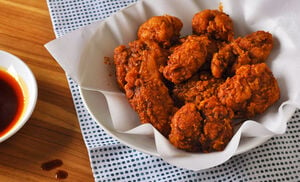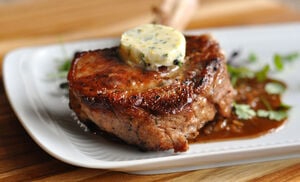Veal Sweetbreads
-
In Stock
- Exclusively available at D’Artagnan
- Humanely raised in a stress-free environment
- Never caged or tethered
- 5 Freedoms compliant, a strict EU standard
- Raised to 6 months, a maximum of 450 pounds
- Milk-fed with a high-quality natural milk formula
- No antibiotics, no hormones, ever
- Never irradiated or injected with any substance
- Sold in an uncooked state
- Product of Netherlands
- For best taste on fresh products, use or freeze within 3-5 days of receipt; for frozen products, use within 1-2 days after thawing
- Subscription Eligible
Sweetbreads must be soaked for several hours, and up to 24 hours, to remove any traces of blood. Cold water can be used, or more traditionally, milk or even buttermilk.
After they are soaked, place sweetbreads in a pot of water and bring to barely a boil. Simmer the sweetbreads briefly (about 5-10 minutes) to firm up the flesh, and then shock in ice water.
Remove any remaining tough membrane, gristle, fat, or veins; best done with your fingers and a small sharp knife. If not removed, these bits will interfere with the creamy texture of sweetbreads.
In classical cooking, the sweetbreads would then be pressed under a heavy weight for at least 2 hours. This can be done under a folded towel on a sheet pan, with another weighted sheet tray on top. The process firms the sweetbreads and presses them into a uniform thickness so they are easy to slice into medallions. This step is not necessary if you are not seeking perfection of appearance.
You can now grill, bread and sear or fry sweetbreads. They are often breaded in order to add crispiness to the creamy, soft texture. Sweetbreads cook quickly and take a nice sear while remaining tender inside. If braising sweetbreads, it is not necessary to poach them in preparation.
Serve with lemons and capers or some acidic sauce to balance the rich creaminess of the sweetbreads.
Arguably the most humane veal in the world, our imported veal complies with the "5 Freedoms" statutes of the E.U., a guarantee that far exceeds the humane standards for veal in other countries. These are the freedom to express normal behavior; freedom from thirst, hunger and malnutrition; freedom from discomfort; freedom from pain, injury, and disease; freedom from fear and distress.









